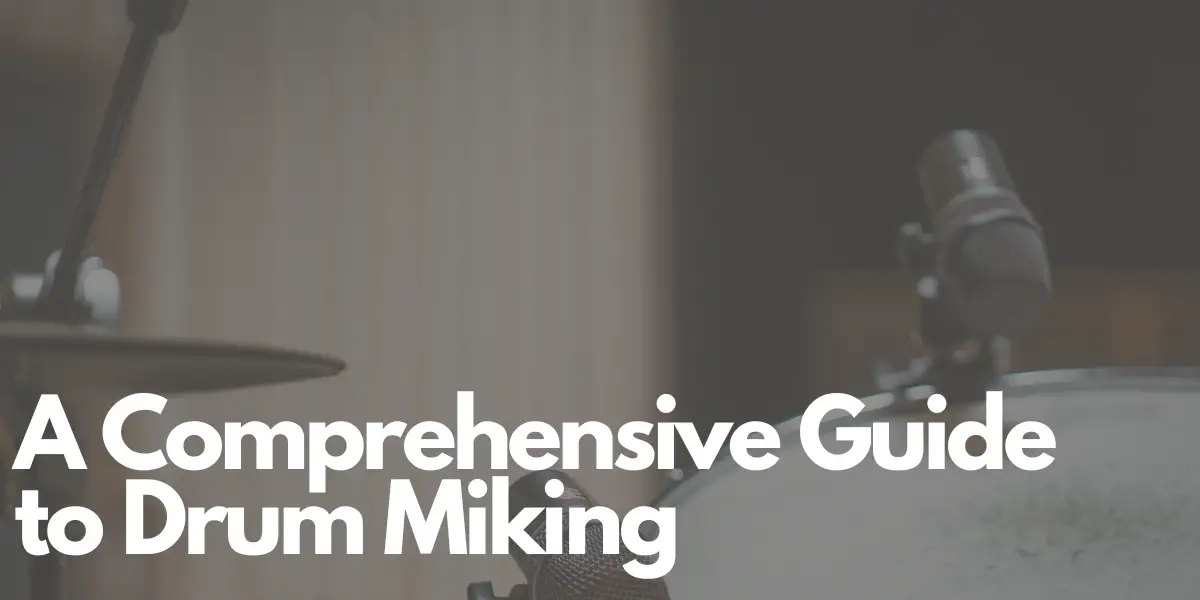Miking a drum set is a crucial skill for any audio engineer or musician looking to capture the heart-pounding rhythm and energy of live or studio drum performances. Properly miking a drum kit allows you to bring out the nuances of each drum, balance the different elements, and tailor the sound to suit your music genre. In this comprehensive guide, we will walk you through the essential steps for miking a drum set effectively.
Step 1: Choose Your Microphones
Selecting the right microphones is the foundation of successful drum miking. Here are some commonly used microphone types for miking a drum set:
Kick Drum Microphone
For capturing the powerful low-end punch of the kick drum, dynamic microphones like the Shure Beta 52A or AKG D112 are popular choices.
Snare Drum Microphone
Dynamic microphones such as the Shure SM57 are widely used for capturing the sharp and crisp sound of the snare drum.
Tom Microphones
When miking tom-toms, dynamic microphones like the Sennheiser MD 421 or Audix D4 are excellent options.
Overhead Microphones
Condenser microphones like the Audio-Technica AT2020 or Neumann U87 are suitable for capturing the shimmering cymbals and the overall kit sound.
Room Microphones
To capture the ambiance and natural reverb of the room, use condenser microphones placed further away from the kit.
Step 2: Kick Drum Mic Placement
To capture the thunderous heartbeat of the drum kit, follow these steps:
- Place the kick drum microphone just inside the hole in the resonant head of the kick drum.
- Point the microphone slightly off-center towards the beater or where the beater hits the head.
- Adjust the microphone’s distance from the head to achieve the desired balance of attack and boom.
Step 3: Snare Drum Mic Placement
For a crisp and defined snare sound, follow these guidelines:
- Position the snare drum microphone a few inches above the rim and point it directly at the center of the snare drum head.
- Aim to capture both the snap of the snare wires and the body of the drum.
- Experiment with the microphone’s angle to find the sweet spot for the sound you want.
Step 4: Tom Mic Placement
To capture the tom-toms’ rich tones, consider the following:
- For rack toms, place the microphones a few inches above the drumhead and point them towards the center of the head.
- Position the floor tom microphones similarly but a bit higher to capture the sound of the drum.
- Adjust the angles and distances to balance attack and sustain.
Step 5: Overhead Mic Placement
Creating a balanced stereo image of your drum kit is crucial, and this is where overhead microphones come into play:
- Use a stereo pair of overhead microphones, typically in an XY or ORTF configuration.
- Position the overhead microphones about 3-4 feet above the cymbals and aimed at the center of the drum kit.
- Adjust the distance and angle to achieve the desired balance between the cymbals and drums.
Step 6: Room Mic Placement
To infuse your recordings with the room’s natural reverb and character, try the following:
- Place room microphones at various locations around the room to capture the ambiance.
- Experiment with the distance from the drum set and the height to find the ideal room sound.
Step 7: Check Phase and Alignment
To ensure that your drum sound remains coherent, it’s essential to check and correct phase issues:
- Verify that all microphones are in phase with each other, ensuring sound waves arrive at the microphones in sync.
- Use a phase tester or the polarity switch on your mixer or preamp to correct any phase problems.
Step 8: Use Mic Clips and Shock Mounts
To eliminate unwanted vibrations and noise, invest in quality mic clips and shock mounts:
Step 9: Set Input Levels
Carefully set the input levels for each microphone on your mixer or audio interface to avoid clipping or distortion:
Step 10: Test and Adjust
Fine-tuning your microphone setup is essential to achieving the perfect drum sound:
Step 11: Experiment and Fine-Tune
Remember, miking a drum set is both an art and a science. Small adjustments in microphone placements and settings can have a significant impact on the sound. Tailor your setup to the music genre and the unique characteristics of your drum kit and the room.
In conclusion, achieving a well-miked drum set takes practice, patience, and attention to detail. By following these comprehensive steps and experimenting with your setup, you can capture the natural sound and character of your drums while achieving a balanced and professional mix that enhances your music’s overall sound. So, gear up and start drum miking like a pro!
Author: Mike P
Hi! My name is Mike! I’ve been an apartment producer/musician for 10+ years. I’ve played in punk bands, released EDM tunes on Beatport and iTunes, and have a semi-successful stock music portfolio. Read more…



